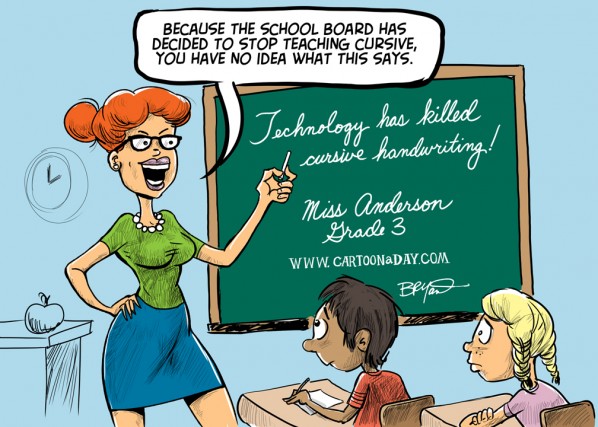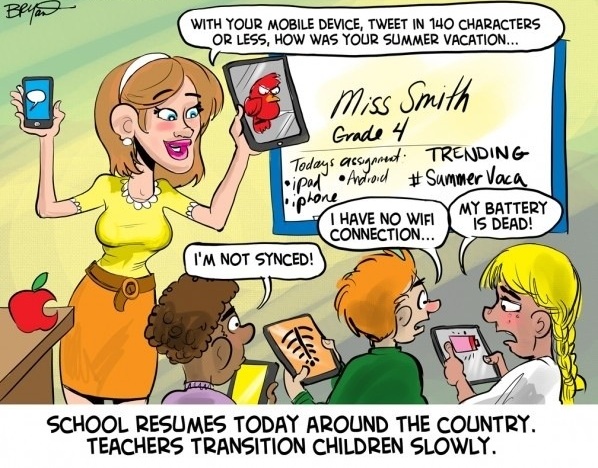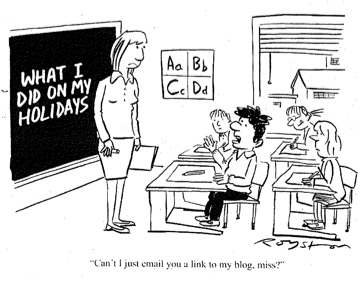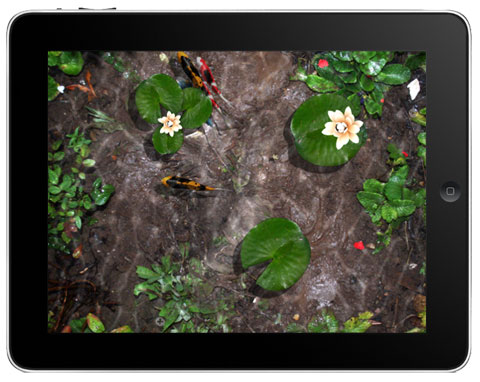Once again, it is time to say goodbye to an enjoyable learning experience. After taking the Assistive Technology I over the summer, I could not believe I could still be amazed by the many things one can do with an iPad (technology). Well, I was wrong. The Assistive Technology II helped increased my appreciation for the use of technology in schools. As an educator, I need to put my teaching preferences aside in order to meet students at their learning needs. The use of AT can help me achieve that goal in the near future.
I am grateful for all the things that I have learnt about technology (low & high-tech). Taking this course helped me be more flexible in my teaching approaches. When it comes to today’s education of young minds, teachers need to think outside their somewhat rigid box (traditional teaching). I am willing to keep an open mind, in order to engage all learners in my mist.
The Lost Art of Cursive Writing

Technology is helping students connect to the world and be more productive in the classroom. However, there is still a lot of misunderstanding in today's classrooms because students do not understand the language use by their teachers. The 'old school' way of instructing (e.g. writing on the board) does not meet the needs of students who are used to texting (print). The art of writing notes is quickly coming to an end, and teachers will have to adopt new ways to communicate clearly with students.

I chose this cartoon because it is a true reflection of what integrating technology can look like and does look like in some schools around NS. As mentioned in previous blogs. My school does not have Wi-Fi in the entire building. It does make it hard, for me, to let some of the LD students use their technological devices because they cannot get any connection. I do not see myself sitting in hallways with 30 kids trying to connect to the internet. More money needs to be injected into updating internet access in all schools. It is time to stop wasting money on software or books no one is going to use. What is the point of having access to technology if it cannot be used properly?
Inclusive education and equity for all learners is not yet a reality in all NS schools. Some kids will always be left behind because of their life realities, which school they go to and/or their learning abilities. My current school only has one computer lab. The only technological devices I have in my classroom are two computers (teacher & spare) with an overhead projector. Furthermore, the school I currently work at is not accessible to students with limited mobility (no elevator) apart from the ramp located at the side of the school. A wheelchair bound kid cannot access the second floor or basement. This should not be happening in 2013. No child should have to be limited to one room or floor because of their physical limitations. I think that until all school create a welcoming environment, for all learners, they may have to use programs like Blackboard (virtual classroom) to make LD or physically handicapped students interact with all their peers and teachers.
What I learnt & what I realized
Today’s class gave me a good insight into what other teachers are experiencing with LD students at their respective schools. Students’ learning is a priority, but we (educators) sometime go the wrong way about ensuring learning and growth in all learners.
We have to presume competency in all children regardless of their learning abilities or disabilities.
Why are ‘we’ building adaptations based on students’ weaknesses? I never taught about that before today. Why force a child to do something they cannot do well (e.g. writing)? Educators should focus on their students’ strengths.
Adaptations do not work for the most part. They are often not revisited on a regular basis or updated to meet students’ changing needs. Not all teachers are consistent in making suggested adaptations.
Many schools still do not have Wi-Fi or lack computers or iPad.
I was surprised to see that 99% of the case studies were all about boys. Is there a reason why boys are at greater risk of developing learning disabilities than girls? Should curriculum makers find ways to create curriculum that are more suitable for the way male students learn best?
Boys vs. Girls/Do They Learn Differently? - Article
During the presentations, I started to get a bit frustrated by the fact that teachers are still expected to use their own money to get Apps or equipments to help improve a child’s learning. In order to do my case study, I had to bring in my own iPad to school. I also purchase notepads (wider lines), and tri-grip pencils for two of my students. I am tired of having to use my time and money to provide things to my students that should already be available in schools. Once again, there needs to be fairness in how technology and resources are distributed amongst NS schools.

















